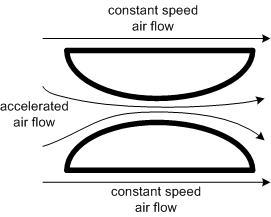Så skulle vi då få veta skälet till att KTH censurerade min bok
BodyandSoul: Mathematical Simulation Technology (MST) under mediadrev mot min person och verk ht 2010 i det som kallats
KTH-gate. Vi skulle alltså till slut få veta varför SCI-skolan på KTH stoppade MST ht 2010 under
följande beskrivning i media (se också
Rappakalja om Simuleringsteknik och
KTH i Kris):
Dagens Nyheter: Greenhouse Effect a Myth According to KTH-book:
- We (students) got very upset when we saw the book. There are statements in the book that climate change does not exist.
- After student protests, pages in the book have been deleted...
- Lennart Bengtsson, meteorologist, member of the Royal Swedish Academy of Sciences: unphysical, completely wrong, nonsense, miserable quality, bullshit ("rappakalja" in Finnish-Swedish).
- Student protests force KTH to "remove" the book.
- To pass exam we have to deny climate change, a student says.
- President KTH Peter Gudmundson: After student protests to KTH, the (in)famous book has been "removed" and "replaced". Nevertheless the teachers for the course continue to use the book.
- Leif Kari (in charge of the engineering physics program): We don't want to have anything to do with the book. It is extremely unusual to "stop a book". This is very serious.
- Lennart Bengtsson again: Deplorable piece of work.
Av detta blev det intet.
Anna-Karin Tornbergs uppgift till läraren på den aktuella kursen tillika medförfattare till MST, att MST ånyo stoppas av KTH pga av otillåten klimatmatematik, följs inte upp när SCI-dekan Gustav Amberg lakoniskt meddelar mig:
Hej Claes
Rektor vidarebefordrade ditt mail till mig och har bett mig svara eftersom den aktuella kursen DN2260 ges av skolan för teknikvetenskap.
Skolan för teknikvetenskap har inte för avsikt att använda ditt material Mathematical Simulation Technology (MST) i undervisningen.
Vänliga hälsningar, Gustav
På detta svarar jag:
Hej Gustav:
Jag förstår inte Ditt brev. Vad jag vet har jag inte erbjudit SCI att använda något av det material inkl MST, som jag äger copyright på, som kurslitteratur.
Däremot skulle jag kunna vara villig att tillåta att det används som bredvidläsning med länk från kursens hemsida. Om inte detta önskas av SCI finns inget av detta material tillgängligt.
Vänligen, Claes
Och svaret blir:
Hej
Jag förstår. Inget är tillgängligt, och vi kommer inte att använda det, vi är överens.
Vänliga hälsningar, Gustav
KTH gör alltså klart att varje form av länk till MST på KTH kommer att raderas. Inget material med min copyright kommer att användas vid KTH. Varje form av länk till MST är otillåten på den web som kontrolleras av KTH, vilket också meddelas direkt till läraren.
Läget är därmed klart: KTH censurerar MST ånyo, denna gång utan motivering. Anklagelserna från 2010 upprepas inte, då det denna gång inte anse behövas något skäl att radera varje spår av det material som bär namnet på läraren som ansvarar för den aktuella kursen, tillsammans med mitt namn. Så agerar den rena makten, som inte behöver motivera sina handlingar.
Rektor åser utan att lyfta ett finger hur en del av KTH äter upp en annan, utan motivering, till skada för KTH och KTHs studenter samt det svenska folk som betalar kalaset.
Media ligger denna gång lågt, då det inte längre är frågan om att hänga ut en professor för att ha skrivit av KTH påstått otillåtna saker i en bok, utan bara att KTH censurerar utan motivering.
Är det bara jag som ser likheter med 1984?
PS1 Uppenbarligen försöker Amberg upprepa den kluriga finten från 2010 att skifta orsak och verkan och låtsas att det är jag som förbjuder SCI att använda MST och att SCI därför inte kommer att lägga upp någon länk. Men det är tvärt emot det faktiska förhållandet: Det är jag som erbjuder SCI att använda material ur MST om länk till MST läggs upp, och det är SCI som förbjuder länk. Jag skickar därför följande upplysning till Amberg att finten är uppfattad:
Vid närmare läsning av Ditt svar förstår jag att Du inte kan läsa vad jag skriver. Jag har erbjudit SCI att använda MST om länk finns.
Detta har SCI avböjt och därför finns inte materialet tillgängligt. Du gör konsekvensen till orsak och orsaken till konsekvens. Förstår Du inte det? Så får man väl inte göra ens i mekanik? Det första Du säger till mig innan jag tagit kontakt med Dig är: "Skolan för teknikvetenskap har inte för avsikt att använda ditt material Mathematical Simulation Technology (MST) i undervisningen." Det som sker först kan inte vara en konsekvens av något senare. Eller hur?
Claes
Svaret från Gustav Amberg blir:
Jag kan bara upprepa att skolan för teknikvetenskap inte har för avsikt att använda ditt material Mathematical Simulation Technology (MST) i undervisningen.
Vänliga hälsningar, Gustav
Ja KTH kan bara upprepa censuren från 2010, denna gång utan skäl.
PS2 Användningen av finten framgår av följande brev från Lars Filipsson SCI till läraren som behöver använda MST:
Jag tror också att delar av materialet kan vara relevanta och bra. Men i en
mejlväxling idag med vår skolchef Gustav Amberg har Claes Johnson förbjudit
oss att använda något av materialet i vår undervisning. Det betyder alltså
att vi inte kan använda några delar av materialet.
Hälsningar
Lars
SCI försöker alltså med bondtricket att påstå att jag förbjuder användning av min bok. Men detta är bluff: Jag säger att material ur boken kan användas om det finns länk till boken. Hur skulle studenterna annars komma åt boken som ju är elektronisk?
Men det är intressant att höra att delar av boken är relevanta och bra, men boken måste likväl förbjudas. Vilka delar är det då som inte är relevanta och bra, och ger det skäl att bränna hela boken?










